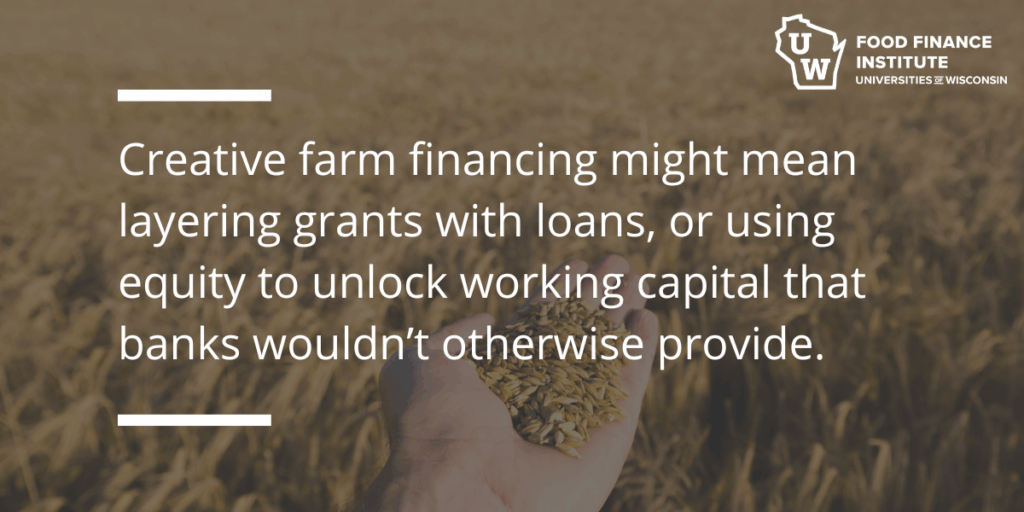Financing a farm, especially an innovative farm, rarely follows a straight, familiar path. Traditional loans are part of the picture, but they’re not the only option. For farm-based food businesses, especially those with unconventional models that involve food processing or distribution, creative financing can be the key to unlocking growth. Understanding where to look and how to structure these opportunities can help build a business faster.
Farm Financing Beyond the Bank
While banks are often the first place farmers turn for financing, they’re not always the most flexible option. Some banks deprioritize smaller loans with unusual terms or frequent renewals, since they often require more work or earn less interest. Other banks simply don’t lend to farms or food businesses at all – it’s not in their wheelhouse. Businesses that combine farming, processing, and specialized sales may benefit from additional financial partners.
This is where alternative financing comes in. Community Development Financial Institutions (CDFIs), for example, are designed to serve businesses that may not qualify for traditional financing. They often have more flexible underwriting criteria and a mission-driven approach that aligns with local economic development.
Revolving Loan Funds and Regional Programs
Some regions have revolving loan funds managed by local economic development agencies. These funds are regularly underutilized and may offer favorable terms for businesses making capital improvements or expanding operations. Because they’re locally managed, they may also be more familiar with the specific challenges and opportunities in the area.
While banks are often the first place farmers turn for financing, they’re not always the most flexible option.
In states like Montana, for example, regional economic development offices have CDFIs that focus specifically on agriculture. When this kind of targeted support exists, it can be a powerful resource.
Utility Companies as Lenders
One of the lesser-known sources of financing for rural businesses is utility companies. Through programs like the Rural Economic Development Loan and Grant (REDLG) program, rural electric cooperatives can offer low-interest loans to businesses that create jobs and increase demand for power in their service areas.
Some utilities also offer financing for energy efficiency improvements. These programs may cover the upfront cost of equipment that reduces energy use, with repayment based on projected savings. For food processors or farms with high energy needs, this can be a practical way to fund upgrades.
The Challenge of Equity in Farm Settings
Equity investment can be a powerful tool for food brands, but it’s often more complicated for farms. Farm entrepreneurs generally reside on their farms, and bringing in outside investors can raise questions about ownership, control, and long-term succession. Many investors look for returns via a business sale. For farmers building a legacy, this may not be part of the plan.
That said, there are creative ways to structure equity-like arrangements. Some involve shared ownership of land with buyout provisions. Others focus on operating assets, like processing facilities or machinery, rather than the farm itself. These models require careful planning but can open doors to capital that might otherwise be out of reach.
Matching Investors with Values
Impact investors who prioritize social or environmental outcomes alongside financial returns can be a good fit for food and farm businesses. Still, impact investors are not one-size-fits-all. Some focus on local food systems, others on climate resilience, and others on supporting women- or minority-owned businesses.
Understanding what an investor values is just as important as understanding what they offer. A good match can lead to a strong, long-term partnership, while a mismatch can lead to frustration on both sides.
Putting It All Together
Creative financing isn’t about finding a silver bullet. It’s about combining resources and funding your farm’s future in a way that supports the business’s goals, values, and growth trajectory. That might mean layering grants with loans, or using equity to unlock working capital that banks wouldn’t otherwise provide.
At the Food Finance Institute, we help businesses explore these options, understand the trade-offs, and build financing strategies that work in the real world. In food and farming, creativity isn’t just for the product—it’s essential for the capital too.


